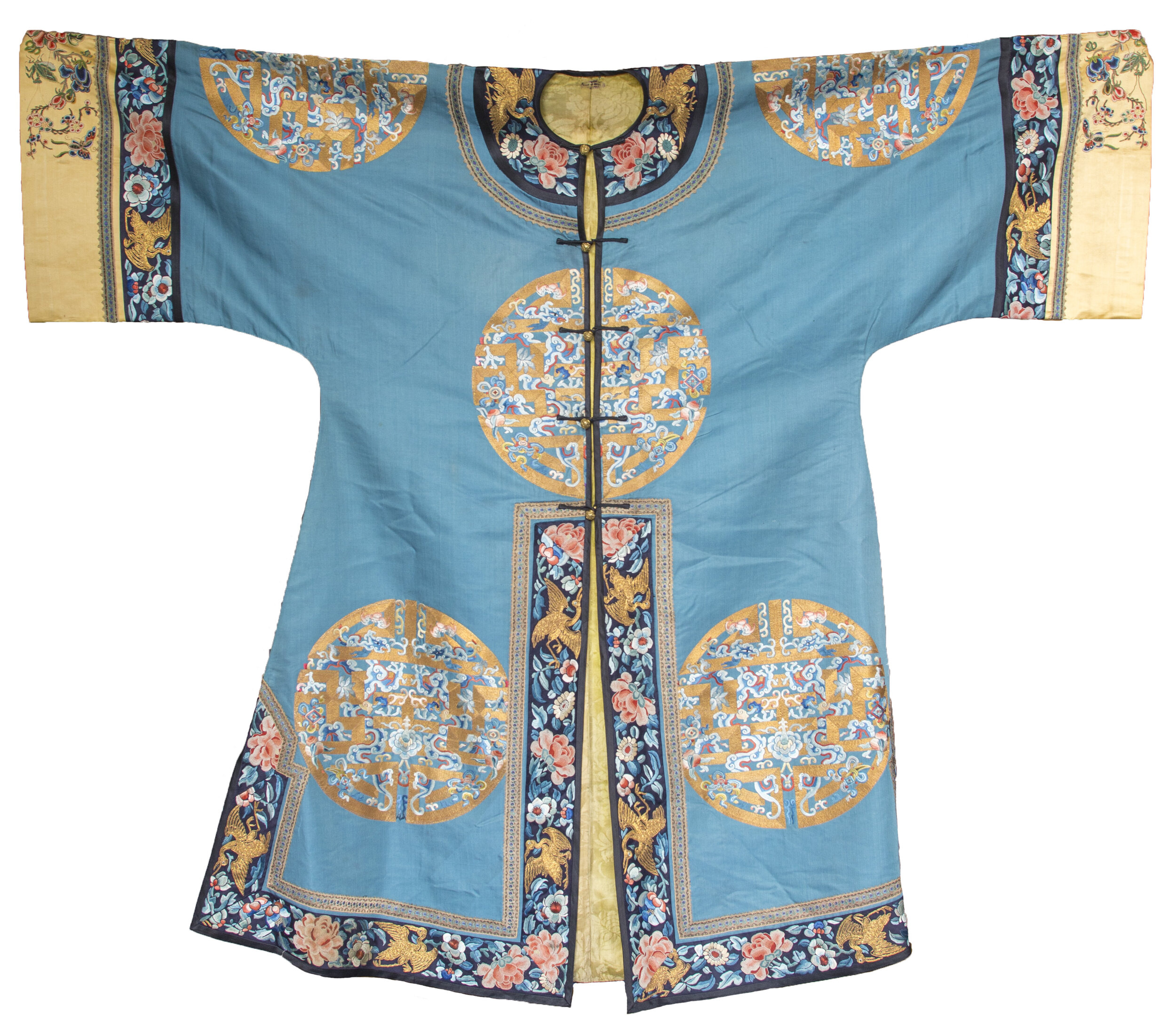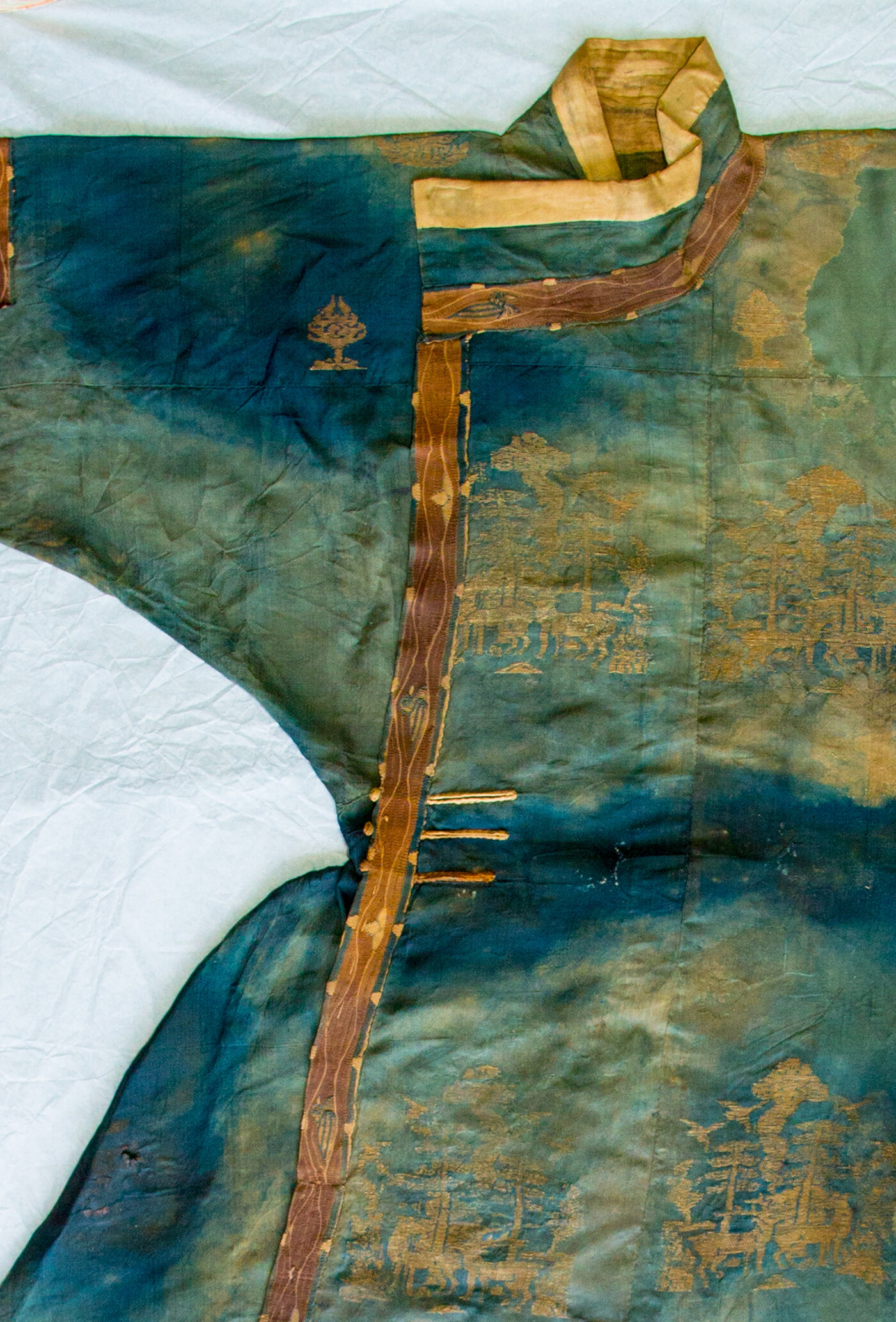In Conversation with Collector Chris Hall
Building an opportune collection
Chris Hall is a professional accountant who spent most of his life in Hong Kong. As the past President of the now-defunct Textile Society and a former President of the Oriental Ceramic Society of Hong Kong, he is better known for his private collection of Chinese textiles. Over the 40 years of his collecting life, he has amassed more than 1000 pieces, including ritual dance robes, imperial badges, dragon robes, bound-foot shoes and other textile related items. A personal selection of items from the Warring States period (475 - 221BC) to Qing dynasty (AD 1636 - 1911) to contemporary work, his accumulation is internationally recognized as one of the largest, finest and most comprehensive collections of antique Chinese costumes and textiles in private ownership.
Chris was first inspired during an opportune visit to the Mandarin Oriental Hotel in 1978, the halls of which were lined with Mandarin robes. Back then, he had been collecting various decorative arts, including pocket watches, Chinese and Japanese textiles. “At the time, there was only one good collection of Chinese textiles, which was put together by Zhu Qiqian (1871-1964),” recalled Chris, “I saw a once in a lifetime, if not once in a world’s lifetime opportunity, to assemble a unique and precious collection of Chinese textiles.”
In the 1980s, Chinese textiles from Tibetan monasteries started to surface. When the monasteries were closed and destroyed by the authorities, their textiles were handed to the local Tibetans who later fled to Nepal. As a visa-free British colony, Hong Kong became a transit point for American and Nepalese dealers with Tibetian textiles before they travelled to New York and other cities. It was then that Chris realised he was able to acquire unique pieces at the first stop of the dealers’ world tours and decided to focus solely on building a world-class collection of Chinese textiles. This is an example of what Deetz noted in 1977 that what survives in collections are thanks to multiple reasons, such as taste, connoisseurship, the development and commercialisation of the art market, to name a few, which also shape our reading of the past material worlds (Pennell, 2017).
In the beginning, Chris was collecting Ming textiles and religious textiles used in Tibet. Eventually, his objective became to sample everything in every period related to Chinese textiles, collecting not only pieces of textile work, but also items related to the textile history in China - chemical dye tins, photos, letters, tools, and more. He enjoys promoting silk knowledge in particular, regularly shares his collection and understanding by inviting guests to his home and giving workshops across Hong Kong.
Rarity, beauty, condition and age
A tour around Chris’s thoughtfully and colourfully decorated home gave insights to its owner’s joyful taste - wall-size historical European portraits, a 19th Century French cabinet, a bathroom wall covered in hand-drawn and photographic tiles, and antique carpets. “The wow factor is key for me to see a piece as a potential collection.” Chris explained, “Then I consider four aspects of the piece: rarity, beauty, condition and age.”
The beauty of a private collection is that it reflects the collector’s character and personal encounters. Rather than following a set of acquisition guidelines and priorities in an established museum, it is assembled by passionate individuals. This often leads to unique finds which would otherwise never make it into a well-cared-for environment. One rare category of Chris’s collection is Chinese handkerchiefs. They were gathered as they appeared, but over the years it has accumulated into an interesting selection that connects themes and stories, such as Wu Song who killed a ferocious tiger. These textiles, being organic and easily decayed, are well kept in atmosphere-controlled rooms, laid flat to minimise stress on the threads. Each piece is also simply yet carefully documented and filed by Chris.
A private collection for the public
Chris is actively bringing his collection to the public, through lecturing, giving handling sessions and loaning his pieces for museum exhibitions. In 1995, Chris organised the first major exhibition of early Chinese textiles at the Hong Kong Museum of Art, titled Heavens’ Embroidered Cloths - One Thousand Years of Chinese Textiles, which consisted of collections of his own, Liaoning Museum and from the US. Parts of his collection are now on long-term loan to China’s National Silk Museum in Hangzhou and the Asian Civilizations Museum in Singapore.
Looking into the future, Chris hopes to find a home for his precious collection in a well-equipped museum. Acknowledging that a lot of research opportunities exist within his collection, he believes that the textiles should be made available for the public in the region for the study of Chinese heritage.
Check out the current Crowning Glory: The Beauty of Ladies' Ornaments from Asia and Europe exhibition at the Liangyi Museum in Hong Kong for the display of a selection of the Chris Hall collection.
Learn more from the publication Power Dressing: Textiles for Rulers and Priests from the Chris Hall Collection, and on Chinese Buddhist robes, Jiasha.
A selection of 19th century purses, embroidered with bird and plant motifs, with one in a vase shape. Photo: courtesy of Liang Yi Museum
A lady's jacket from China from the mid-19th century, where gold thread has been used for the embroidery. It's part of the Chris Hall Textile Collection. Photo: courtesy of Liang Yi Museum
Reference:
Pennell, S. (2017). Mundane materiality, or, should small things still be forgotten?. In: K. Harvey, ed., History and Material Culture: A Student's Guide to Approaching Alternative Sources. Routledge.












